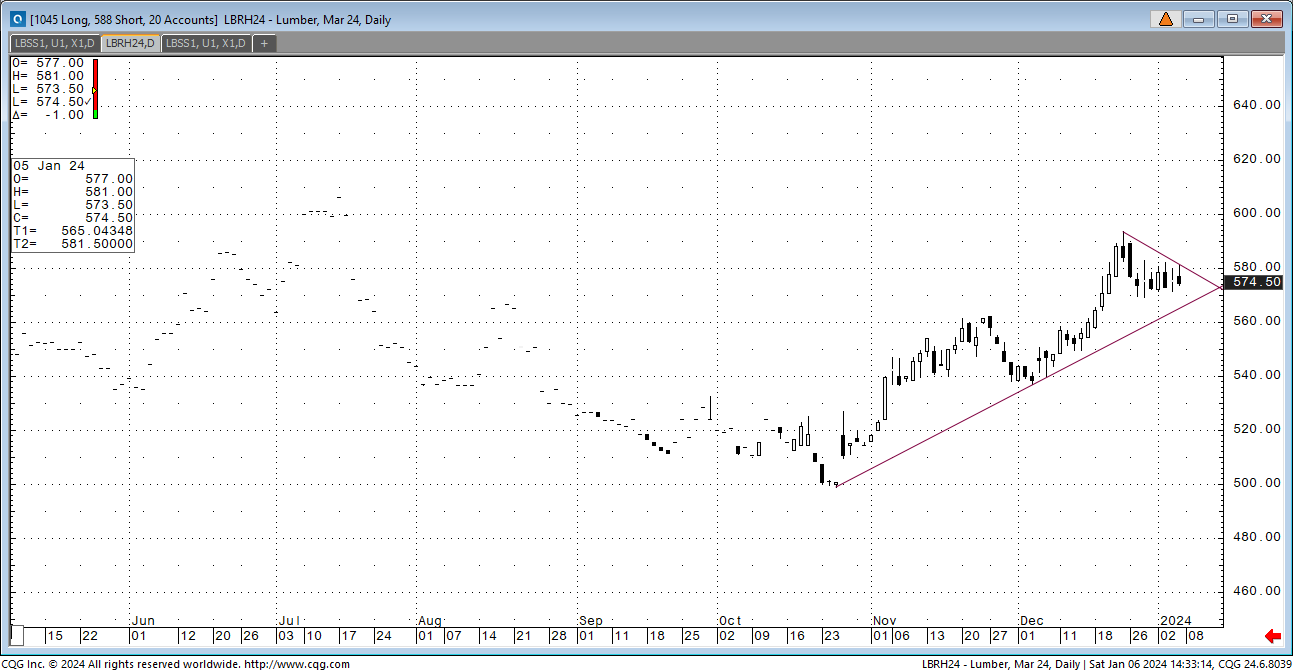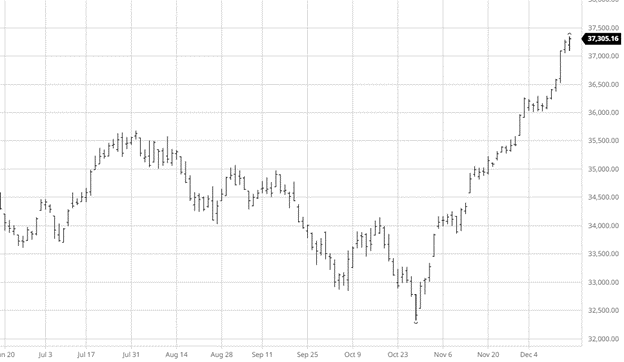Recap:
The market topped right before Christmas and now has given back $43 of the $56 rally in March. What we saw last week was the selling gaining momentum. The short-term focus has to be on the range. Is it the low of 537.00 at the start of the December rally, or is it back at $500, March’s bottom in November? Here are a few points.
There are zero reports of the market struggling. The market is fluid, but it is work. Are there deals showing up? Yes, but on a limited basis and at a higher level. So, the industry is now accepting a trade at a higher level. We all expected it. It tells us that in the short term, prices will not go back to the original lows but base out higher.
Technical:
The elephant in the room is Friday’s January close of 528.00. Next Friday, there will be a large weekly gap. Those gaps get closed. Would I get short on Tuesday because of the gap? No, but we will see 528. The weather and the algo selling tells me that it should come sooner rather than later.
Note: this has been a short-term read. We are looking at 550, 537,528, or even 500. In 2023, watching the downside grew the dollars. In 2024, not watching the upside will be painful. Treat 2024 like 2019. Stay balanced so you can reap the benefits of any upside move.
Daily Bulletin:
https://www.cmegroup.com/daily_bulletin/current/Section23_Lumber_Options.pdf
The Commitment of Traders:
https://www.cftc.gov/dea/futures/other_lf.htm
About the Leonard Report:
The Leonard Lumber Report is a column that focuses on the lumber futures market’s highs and lows and everything else in between. Our very own, Brian Leonard, risk analyst, will provide weekly commentary on the industry’s wood product sectors.
Brian Leonard
312-761-2636




















